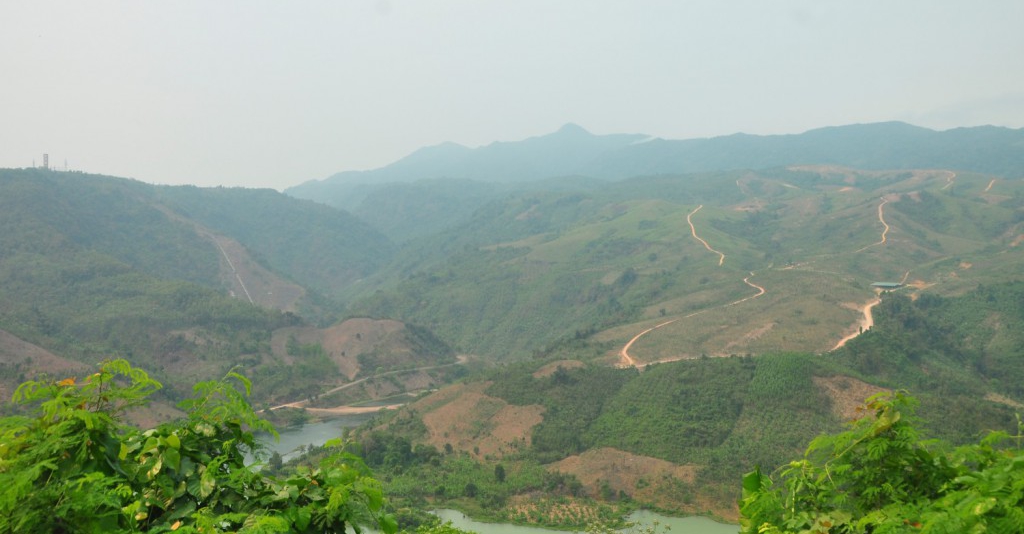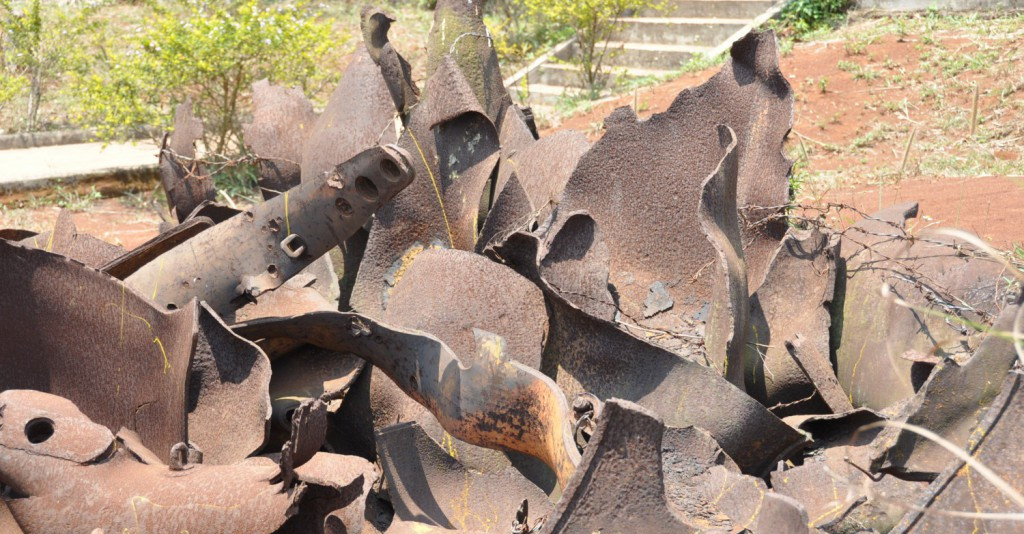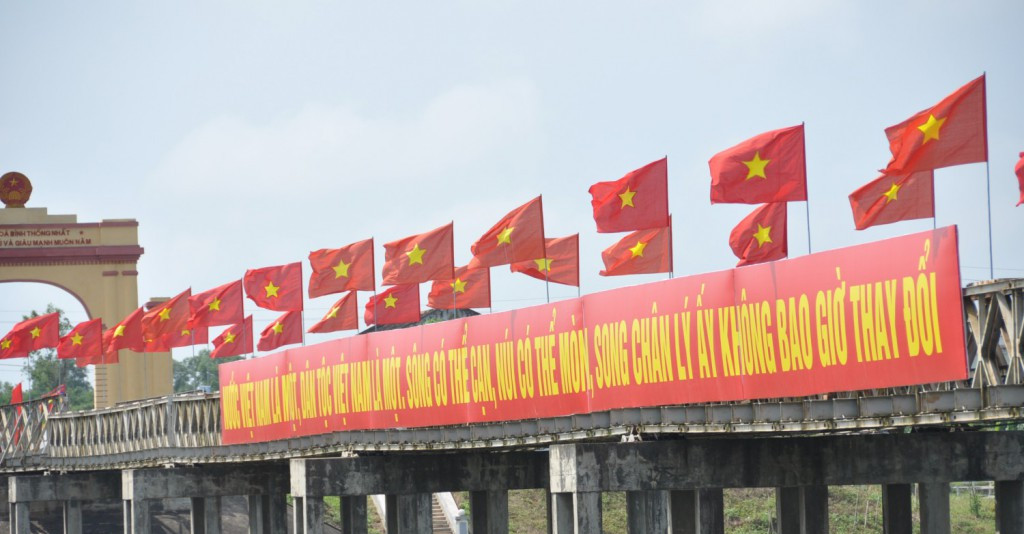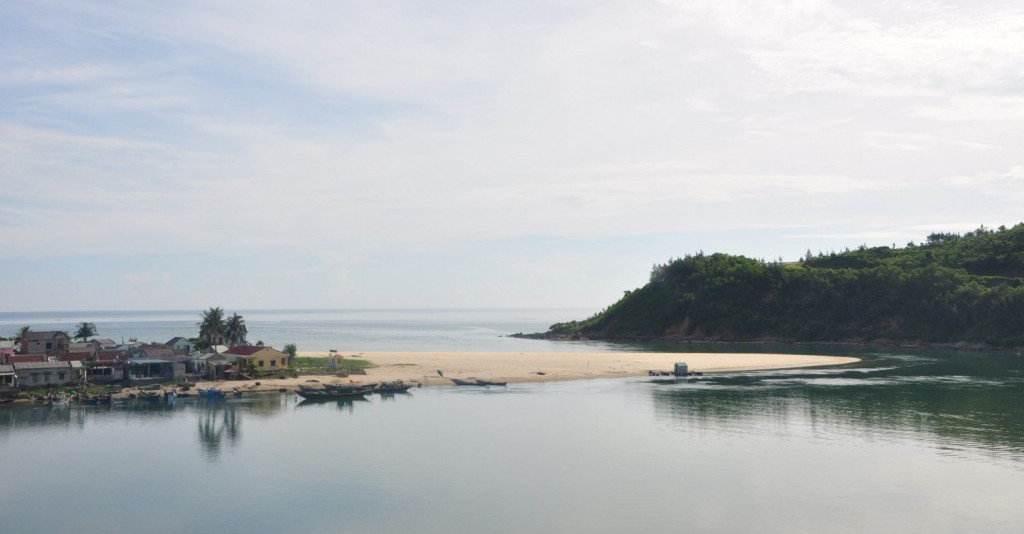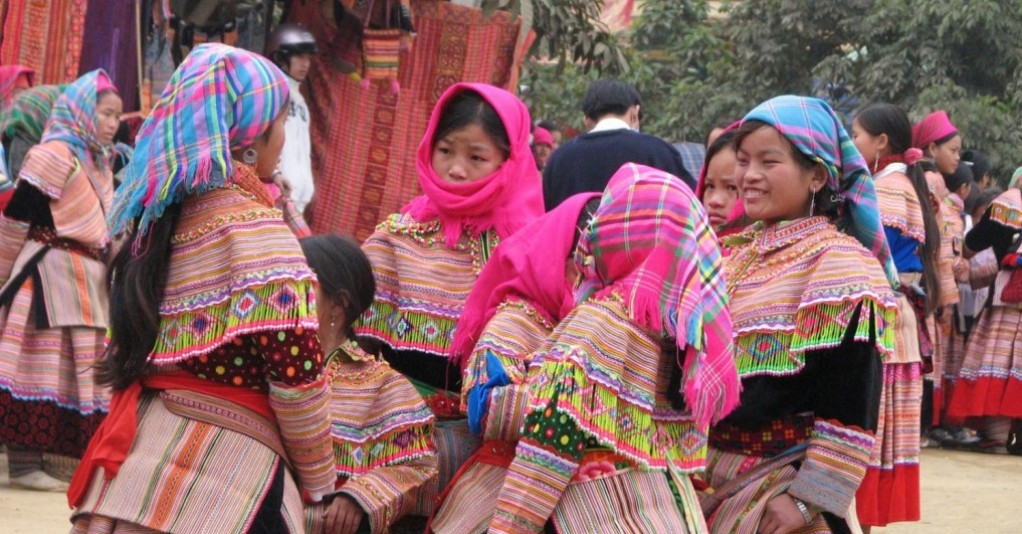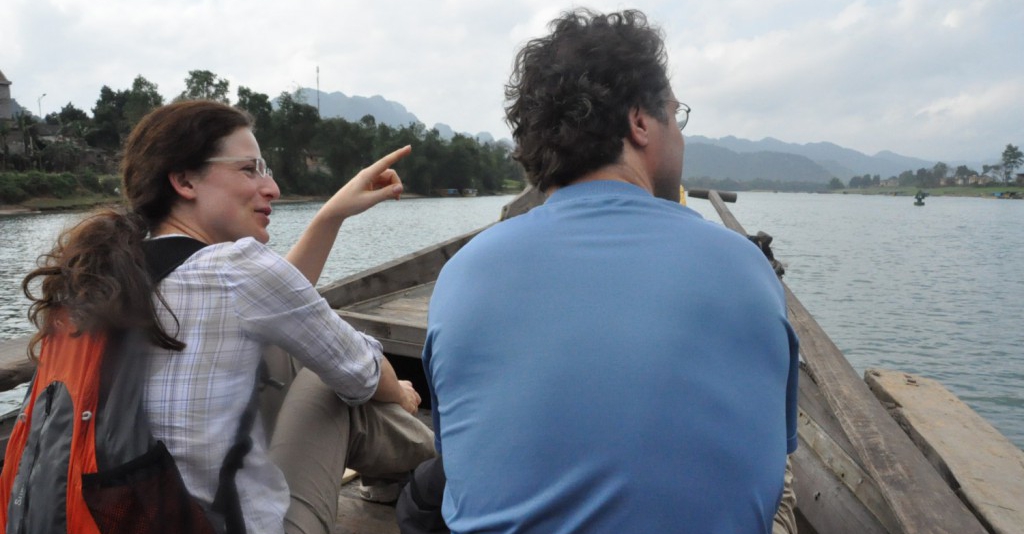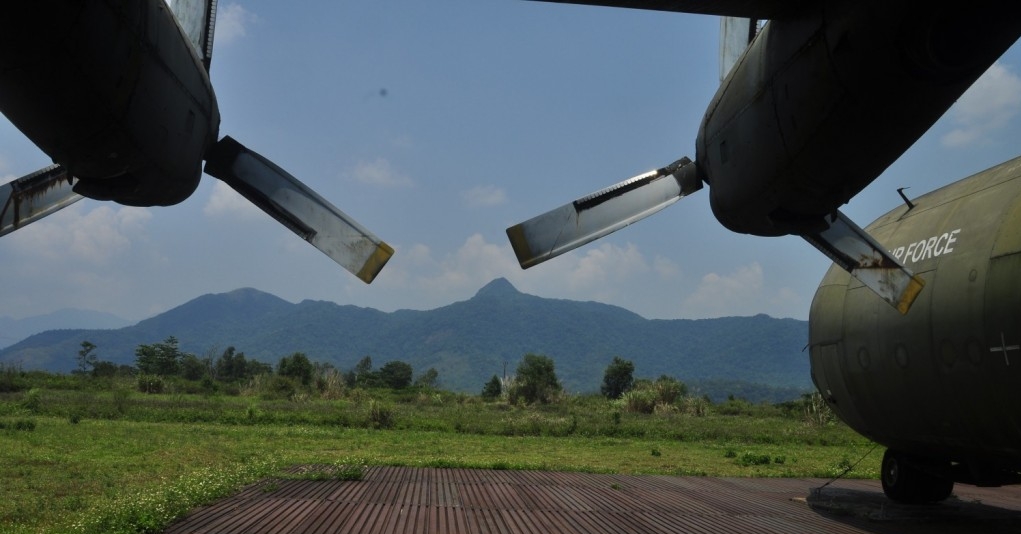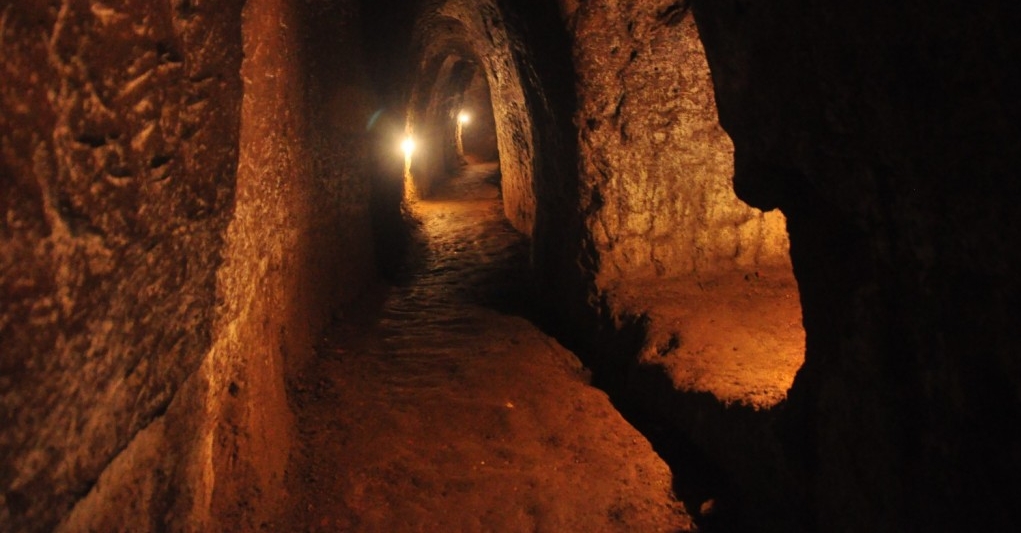VIETNAM’S LEADING BATTLEFIELD TOUR OPERATOR
Join us for a journey through the history of Vietnam conflicts.
I CORPS
Khe Sanh Combat Base
The Marine Combat Base of Khe Sanh is the scene of the longest siege in Vietnam War. In early 1968, some 6000 US Marines at Khe Sanh Combat Base and surrounding hill outposts were besieged by some 20,000 NVA troops. The NVA forces constantly and heavily bombarded the base with artillery and the hill outposts were attacked and cut off from the main base. After 77 day siege, the US Marines closed and abandoned Khe Sanh base camp...
Tour details >>>
Hill 861, Hill 881 North & South - Khe Sanh Hill Fight
In the late spring of 1967, one of the fiercest fightings of Vietnam War took place on the hills of 861, 881 South and 881 North located outside the Khe Sanh Combat Base . Some 2000 NVA troops and 1500 US Marines fought in a bloody face to to combat in order to take the three stratigic high grounds overlooking Khe Sanh combat base. The battle lasted for over three and a half week ( 24 April - 11 May 1967 ) with the US Marines taking the hills, and later on, they occupied these hill outposts during the siege of Khe Sanh in early 1968. The Marines suffered 155 killed and 425 wounded while the NVA losses were 920...
Tour details >>>
Con Thien ( Alpha 4 ) & Gio Linh ( Alpha 2 ) firebases
Gio Linh ( Alpha 2 ) and Con Thien ( Alpha 4 ) were the two northern-most firebases of the US Marines in South Vietnam. They are located right at the southern edge of the demilitarized zone ( the DMZ ). They were estabished in September 1967, when the US Navy enginees bulldozed a strip to at least 600 meters wide running right below the DMZ with a distance of about 11 km . This became known by the Marines as McNamara Line. The 600 meter wide path was stripped of trees, brush and villages if needed. The backbone of the strong-point system were fortified bases Alpha 2 at Gio Linh on the east, Alpha 4 at Con Thien on the west, and Alpha 3 in between...
Tour details >>>
Cunningham firebase hiking
This Marines firebase was located halfway between Khe Sanh and A Shau valley on route 558, established in early 1969 by the 2/3 Marines in support of Operation Dewey Canyon in the A Shau valley, and named after Alfred Cunningham - the first Marine Corps aviator in World War 1.
On 2 February 1969 the base was hit by 30-40 rounds of 122mm artillery fire resulting in 5 Marines killed. On the early morning of 17 February the NVA sappers attacked the base resulting in 4 Marines and 37 NVA soldiers killed. By mid March the 2/3 Marines closed the base and withdrew back to Vandergrift Combat Base...
Tour details >>>
Firebase Bastogne hiking ( A Shau Valley )
Firebase Bastogne - named after the Battle of Bastogne in WW2 - is located along Route 547, halfway between Hue city and the A Shau Valley, established in March 1968 by the 1st Brigade, 101st Airborne Division. It was an important fortified base of the Screaming Eagles to block the stratigic Route 547 linking Hue with the A Shau Valley, and to provide fire support for the search and destroy operations in the A Shau Valley.
Firebase Bastogne was the largest firebase in the A Shau Valley, which had four artillery batteries: 105, 155, 175 and 8 inch. It also had 2 twin 40-MM "Dusters.
Bastogne was attacked and abandoned in the East Offensive in April 1972...
Tour details >>>
Firebase Birmingham hiking ( A Shau Valley )
Firebase Birmingham was established in early March 1968 by the 2nd Brigade, 101st Airborne Division overlooking Route 547 to support Operation Jeb Stuart. The base is located about 20 km southwest of Hue. During 1969-1970 Birmingham was used to support the 101st Airborne's search and destroy operations in the A Shau Valley - Operation Apache Snow in 1969 and Operation Texas Star in 1970.
In the 1972 East Offensive the base was overrun by the North Vietnamese Army, but later recaptured by the ARVN...
Tour details >>>
Firebase Veghel hiking ( A Shau Valley )
Firebase Veghel is located on Route 547, halfway between Hue city and the A Shau Valley. The base was named after the Dutch town of Veghel, one of the drop zones during the World War II operation Market Garden, which was captured by the 501st Infantry Regiment, 101st Airborne Division in September 1944. On 16 April 1968, the 1st Battalion, 327 Infantry Regiment began an assault on two hills about 40 km southwest of Hue on Route 547 in preparation for Operation Delaware The hills were finally captured on 19 April and the firebase was established there. Veghel had 3 artillery batteries: 105, 155 and 175, making it one of the largest firebases in the A Shau Valley...
Tour details >>>
A Shau Special Forces Camp tour ( A Shau Valley )
The A Shau Special Forces Camp was located at the southern end of the A Shau Valley, about 85 km southwest of Hue city and 2 km east of the Laotian border. The A Shau valley was strategically important for the North Vietnamese Army as a major infiltration route because it served as a bridge from the Ho Chi Minh Trail in Laos into populated coastal areas of Hue . The camp had been established in March 1963. Defending the camp were 17 US Special Forces, 10 South Vietnamese Special Forces and 480 Civilian Irregular Defense Group personnels, supported by Air Commando units equipped with A1 Skyraiders and AC-47 Spooky gunships...
Tour details >>>
Camp Evans - firebase Rakkasan & firebase Jack hiking ( A Shau Valley )
Firebase Rakkasan was located halfway betwwen Hue city and the A Shau Valley, about 45 km northwest of Hue city. It was established by late 1968 and named after the nickname of the 187th Airborne Infantry Division. On 10 January 1969, the change of commnand ceremony of the 3rd Battalion, 187th Regiment took place on this firebase when Lt. Colonel Weldon Honeycutt took command of the 3/178th from Lt Colonel George Scheets. Now it is converted to farmland and it is only reachable by motobikes...
Tour details >>>
The Marine Combat Base of Khe Sanh is the scene of the longest siege in Vietnam War. In early 1968, some 6000 US Marines at Khe Sanh Combat Base and surrounding hill outposts were besieged by some 20,000 NVA troops. The NVA forces constantly and heavily bombarded the base with artillery and the hill outposts were attacked and cut off from the main base. After 77 day siege, the US Marines closed and abandoned Khe Sanh base camp...
Tour details >>>
Hill 861, Hill 881 North & South - Khe Sanh Hill Fight
In the late spring of 1967, one of the fiercest fightings of Vietnam War took place on the hills of 861, 881 South and 881 North located outside the Khe Sanh Combat Base . Some 2000 NVA troops and 1500 US Marines fought in a bloody face to to combat in order to take the three stratigic high grounds overlooking Khe Sanh combat base. The battle lasted for over three and a half week ( 24 April - 11 May 1967 ) with the US Marines taking the hills, and later on, they occupied these hill outposts during the siege of Khe Sanh in early 1968. The Marines suffered 155 killed and 425 wounded while the NVA losses were 920...
Tour details >>>
Con Thien ( Alpha 4 ) & Gio Linh ( Alpha 2 ) firebases
Gio Linh ( Alpha 2 ) and Con Thien ( Alpha 4 ) were the two northern-most firebases of the US Marines in South Vietnam. They are located right at the southern edge of the demilitarized zone ( the DMZ ). They were estabished in September 1967, when the US Navy enginees bulldozed a strip to at least 600 meters wide running right below the DMZ with a distance of about 11 km . This became known by the Marines as McNamara Line. The 600 meter wide path was stripped of trees, brush and villages if needed. The backbone of the strong-point system were fortified bases Alpha 2 at Gio Linh on the east, Alpha 4 at Con Thien on the west, and Alpha 3 in between...
Tour details >>>
Cunningham firebase hiking
This Marines firebase was located halfway between Khe Sanh and A Shau valley on route 558, established in early 1969 by the 2/3 Marines in support of Operation Dewey Canyon in the A Shau valley, and named after Alfred Cunningham - the first Marine Corps aviator in World War 1.
On 2 February 1969 the base was hit by 30-40 rounds of 122mm artillery fire resulting in 5 Marines killed. On the early morning of 17 February the NVA sappers attacked the base resulting in 4 Marines and 37 NVA soldiers killed. By mid March the 2/3 Marines closed the base and withdrew back to Vandergrift Combat Base...
Tour details >>>
Firebase Bastogne hiking ( A Shau Valley )
Firebase Bastogne - named after the Battle of Bastogne in WW2 - is located along Route 547, halfway between Hue city and the A Shau Valley, established in March 1968 by the 1st Brigade, 101st Airborne Division. It was an important fortified base of the Screaming Eagles to block the stratigic Route 547 linking Hue with the A Shau Valley, and to provide fire support for the search and destroy operations in the A Shau Valley.
Firebase Bastogne was the largest firebase in the A Shau Valley, which had four artillery batteries: 105, 155, 175 and 8 inch. It also had 2 twin 40-MM "Dusters.
Bastogne was attacked and abandoned in the East Offensive in April 1972...
Tour details >>>
Firebase Birmingham hiking ( A Shau Valley )
Firebase Birmingham was established in early March 1968 by the 2nd Brigade, 101st Airborne Division overlooking Route 547 to support Operation Jeb Stuart. The base is located about 20 km southwest of Hue. During 1969-1970 Birmingham was used to support the 101st Airborne's search and destroy operations in the A Shau Valley - Operation Apache Snow in 1969 and Operation Texas Star in 1970.
In the 1972 East Offensive the base was overrun by the North Vietnamese Army, but later recaptured by the ARVN...
Tour details >>>
Firebase Veghel hiking ( A Shau Valley )
Firebase Veghel is located on Route 547, halfway between Hue city and the A Shau Valley. The base was named after the Dutch town of Veghel, one of the drop zones during the World War II operation Market Garden, which was captured by the 501st Infantry Regiment, 101st Airborne Division in September 1944. On 16 April 1968, the 1st Battalion, 327 Infantry Regiment began an assault on two hills about 40 km southwest of Hue on Route 547 in preparation for Operation Delaware The hills were finally captured on 19 April and the firebase was established there. Veghel had 3 artillery batteries: 105, 155 and 175, making it one of the largest firebases in the A Shau Valley...
Tour details >>>
A Shau Special Forces Camp tour ( A Shau Valley )
The A Shau Special Forces Camp was located at the southern end of the A Shau Valley, about 85 km southwest of Hue city and 2 km east of the Laotian border. The A Shau valley was strategically important for the North Vietnamese Army as a major infiltration route because it served as a bridge from the Ho Chi Minh Trail in Laos into populated coastal areas of Hue . The camp had been established in March 1963. Defending the camp were 17 US Special Forces, 10 South Vietnamese Special Forces and 480 Civilian Irregular Defense Group personnels, supported by Air Commando units equipped with A1 Skyraiders and AC-47 Spooky gunships...
Tour details >>>
Camp Evans - firebase Rakkasan & firebase Jack hiking ( A Shau Valley )
Firebase Rakkasan was located halfway betwwen Hue city and the A Shau Valley, about 45 km northwest of Hue city. It was established by late 1968 and named after the nickname of the 187th Airborne Infantry Division. On 10 January 1969, the change of commnand ceremony of the 3rd Battalion, 187th Regiment took place on this firebase when Lt. Colonel Weldon Honeycutt took command of the 3/178th from Lt Colonel George Scheets. Now it is converted to farmland and it is only reachable by motobikes...
Tour details >>>

.jpeg)



